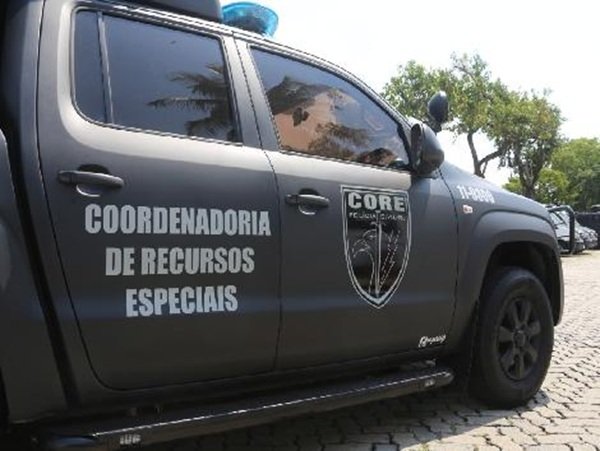Five people were killed during a Civil Police operation in Ladeira dos Tabajaras, a community located between Copacabana and Botafogo in Rio de Janeiro’s South Zone, on Tuesday (15/04). The operation aimed to execute arrest warrants for two suspects involved in the murder of João Pedro Marquini, an officer with the Special Resources Coordination (Core), who was killed during an attempted robbery at the end of March in front of his wife, Judge Tula Corrêa de Mello.
This Content Is Only For Subscribers
To unlock this content, subscribe to INTERLIRA Reports.
The Operation
The police action began around 9:00 and led to a confrontation shortly after officers entered the community. A Civil Police helicopter provided aerial support during the mission. The intense movement of officers disrupted traffic in the area, with some vehicles driving against traffic on Rua Real Grandeza, in Botafogo. Streets providing access to Ladeira dos Tabajaras, which are located in both Copacabana and Botafogo, were affected. Pinheiro Guimarães Street was closed to facilitate police operations.
Reliving the Case
The crime occurred on the night of 30 March, when Marquini and Judge Tula were ambushed in separate vehicles on the Serra da Grota Funda road in the West Zone. Marquini was fatally shot while attempting to fight back. The judge escaped after executing an emergency maneuver. Investigations suggest the robbery was ordered by imprisoned drug trafficker Ronaldo Pinto Lima e Silva, known as Ronaldinho dos Tabajaras. The criminals were fleeing a gunfight with militiamen and planned to steal the judge’s armored car for their escape.
Main Targets
The main targets of the operation were Walace Andrade de Oliveira and Antonio Augusto D’Angelo Fonseca. Fonseca was located in his mother’s apartment, while Oliveira remains at large.
Security Cameras
Investigators identified the suspects in Marquini’s murder through surveillance footage, witness accounts, and intelligence data. Evidence confirmed the criminals were fleeing from the West Zone and intended to use the judge’s vehicle to escape.
Drug Trafficking Boss
One of the five men killed during the operation was Vinicius Kleber di Carlantonio Martins, the local drug lord known as “Cheio de Ódio” (Full of Hate), who ran trafficking operations in Ladeira dos Tabajaras.
ADPF das Favelas
The operation occurred less than two weeks after Brazil’s Supreme Federal Court (STF) concluded the trial of ADPF 635—also known as ADPF das Favelas. The ruling outlined measures to reduce police lethality in Rio, including stronger Federal Police involvement and requirements for strategic plans to reclaim territories controlled by criminal factions.
Police-Related Deaths
The five deaths recorded during the Core operation in Ladeira dos Tabajaras are equivalent to the total number of police-related killings in the 19th BPM area—responsible for the Copacabana and Leme neighborhoods—over the past four years (2021 to 2024). According to data from the Public Security Institute (ISP), there were no deaths resulting from police actions in that district during the first two months of 2025, with the last such incident occurring in April 2024. Historically, the area has averaged five police-related deaths per year since 2003. Statewide, 147 people died in confrontations with police in January and February of this year, representing a 27% increase compared to the same period in 2024.
Analysis:
The Civil Police operation in Ladeira dos Tabajaras reflects the ongoing security challenges in Rio de Janeiro’s urban areas, where organized crime, territorial disputes, and high-profile crimes frequently lead to violent confrontations. The killing of five individuals, including a known drug trafficker, points to the high-risk nature of police missions. The state continues to rely on direct armed interventions to confront criminal groups, raising concerns about the long-term impact of such operations on public security.
The timing of the raid is especially relevant, taking place shortly after the Supreme Federal Court concluded the ADPF 635 ruling, which sets guidelines to reduce police lethality in favelas. Despite this, the use of helicopters and the intensity of the operation suggest that new protocols are either not yet fully adopted or are being selectively applied.




